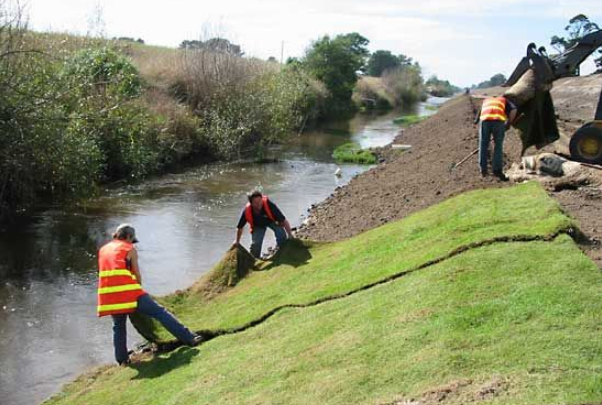If you wish to have a beautiful yard or a garden equipped with greenery and attractive plants? To add to the beauty of your residential area, it is a must that the soil is fertile enough to allow perfect growth of plants. If the soil is fertile then it is essential that the fertility is retained. A major threat to the soil is soil erosion, the process that washes away rich topsoil and renders the soil infertile. The causes are numerous but the major one is water, leading to what one can refer to as water erosion.
Thus, it is necessary that effective soil erosion control techniques are employed so that the soil retains its fertility and you use comparatively less amount of water for the plants to flourish. So, in the direction of preventing the major in the lot, water erosion, following are the methods of doing so.
Imbibe the practice of mulching
Bare soil is more likely to get eroded than covered earth. Mulching involves covering of soil with mulch, a layer of organic materials like dry leaves, plant remains, hay grass clippings, wood chips, and sawdust, thereby reducing erosion. Apart from these, spreading of pebbles and gravels on bare soil adds weights to the soil and prevents it from being carried away easily. The whole reason behind mulching is to minimize the exposure of soil to the atmosphere, enhance its moisture retaining capability and to prevent soil erosion.
Enhance the drainage
The presence of a good drainage system covering the yard or your lawn effectively is a must. Pipes should run wherever required so that excess of water, especially during heavy rains, could be carried away- unaccompanied by the rich topsoil.
Plant more shrubs
Shrubs are medium-sized plants featuring multiple woody stems near the base. Shrubs are capable of holding the soil tightly. They spread over a considerable area, thereby, providing a cover to the soil against wind and high-velocity water. It is one of the easiest methods of carrying out the process of soil erosion control.
Build tiny walls around the plants
Raising tiny walls of the approximate size of a brick around trees and plants prevents the soil from being washed away by water. They act as a barrage and also prove handy while watering the plants by allowing the water to collect around the plant and seep in slowly. The tiny walls could either be cemented or made of mud.
Over-seeding
It is a practice of spreading seeds on bare soil either independently or along with mulch. This will lead to the production of more roots below the surface which in turn will bind the soil and prevent its drainage. Also, more herbs and plants mean more greenery, resulting in a fresher and healthier atmosphere around you.
Optimum watering incorrect way
Water the plants wisely. On one side overwatering is harmful as it leads to water erosion while less watering isn’t a solution either. One should water the plants as and when required in optimum amounts. To do watering in right sense, one should know which plant needs what amount of water for perfect growth. Also to ease out the process, one can plant in zones where each zone houses plants which require approximately the same amount of water.
Thus, in the path towards soil erosion control, the above points ought to be followed. Apart from those, building of walking lanes in the yard is useful. So, with these things done, one can expect healthy soil as well as attractive plantations around one’s home.
